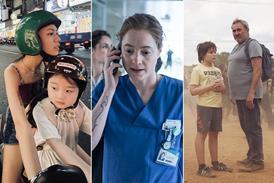Japanese director Tetsuya Nakashima, known for films such as Confessions and Memories Of Matsuko, has brought The World Of Kanako to Busan’s Midnight Passion section.
Based on a novel by Akio Fukamachi, the mystery thriller follows an ex-cop played by Koji Yakusho who is searching for his missing daughter and comes to realise how little he knew about her actual life in an underworld that was hidden by her beautiful, straight-A student façade.
How did this film come together?
I happened to read the original novel and it was interesting. But it was very difficult to make it into a film because it’s hard to empathise with the main character.
I originally worked with Toho, a major distributor in Japan, but they said they couldn’t do a film like this. So I thought I would do it on a very low budget with unknown actors. But then Gaga appeared like a godsend and I got to do it the way it is.
How did you handle the casting?
The characters are not very likeable and the actors didn’t get any more popular by playing them, but from Yakusho to the supporting cast, I was able to get very well-known actors by giving them the script directly, one by one. They were all my first choices. I heard from them later that in Japanese films these days they only get to play good people, so they liked being able to take on these sorts of roles.
For the role of Kanako, I thought it would be very hard to find someone to play this girl who is so attractive in appearance yet whose internal workings you couldn’t really figure out, but we found newcomer Nana Komatsu in an audition.
Yakusho Koji’s character is a man who can only communicate through violence. So for an actor, I needed someone who could be both mentally and physically funny and frightening, and show comedy and tragedy at the same time.
Do you think the ‘production committee’ system in Japan is making films too bland these days?
It’s really a difficult situation to produce a film like this. They just want films that can make people laugh a bit and make them cry at the ending. All the characters are really good and nice and bland.
I wanted to portray humanity and the bad side of characters and even make them laughable, since that’s another true side of human beings. I think rather than just portraying the good parts of people, showing the bad parts and the honest parts give viewers more plentiful emotions.
What was the shoot like?
First of all, I personally like watching gun fights and car chase action scenes, but I had never shot one myself. That was very difficult. Just setting up one gun shot, with blood splattering everywhere, took so much time that I couldn’t do reshoots sometimes. Actually, the script had more gun fights and car action but I cut them down.
So would you ever do another action film?
Never again! This will be my first and last film with a gun fight or car crashes.
How did you find the first screening of the film in Busan?
Korea is a country were ordinary people watch a lot of films and are sophisticated viewers who are used to high quality directors and actors. So I was tense and happy to screen the film here. People were very friendly and asked a lot of questions after the film and I appreciated it. In the Q&A, there were audience members who liked the film very much, and others who hated the film very much. I think getting those two extremes means it’s a film with unique personality.























No comments yet